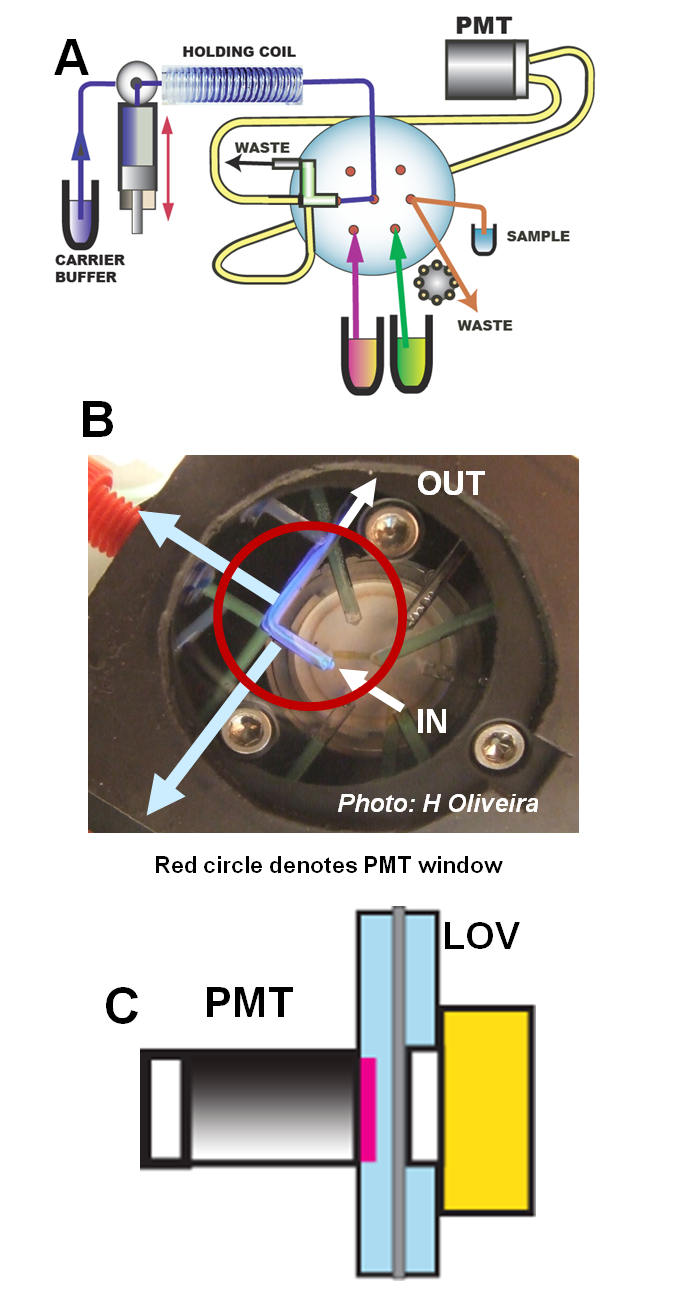There are two ways in which LOV can be configured for chemiluminescence detection:
- by means of optical fibers (A);
- by interfacing PMT with LOV module (B, C).
Efficiency of these approaches was compared in a pioneering work of Oliveira using Fe/ luminol reaction as a model system and for high sensitivity assay of Fe in sea water. In the initial work using peroxide/ luminol assay it was established that two optical fibers (core I.D. 800 µm) configured at right angles and coupled to PMT yielded better response than a single collection fiber. (A, B).
Further refinement of the flow design and the use of luminol/ Fe (II) reaction led to added improvement so that the window configuration yielded enhanced sensitivity by 355 times using the same experimental conditions, due to the broader detection area (B, C). In window configuration, it was possible to achieve a LOD of 1 nmol L-1 and quantify Fe(II) in acidifie seawater samples with range up to 20 nmol L-1 with high precision (RSD < 6%) and accuracy (recovery values rangedbetween 91.6 and 101.5%). (Oliveira et.al.). This approach holds, without question, a promise not only for applications in chemical oceanography, but also for all methods based on chemiluminescence detection.
Hugo M. Oliveira, Maxime Grand, Jaromir Ruzicka, Christopher I. Measures. “Chemiluminescence with micro sequential injection lab-on-valve format: a proof of concept” submitted for publication.
Chemiluminescence in LOV Format
2.3.13.










